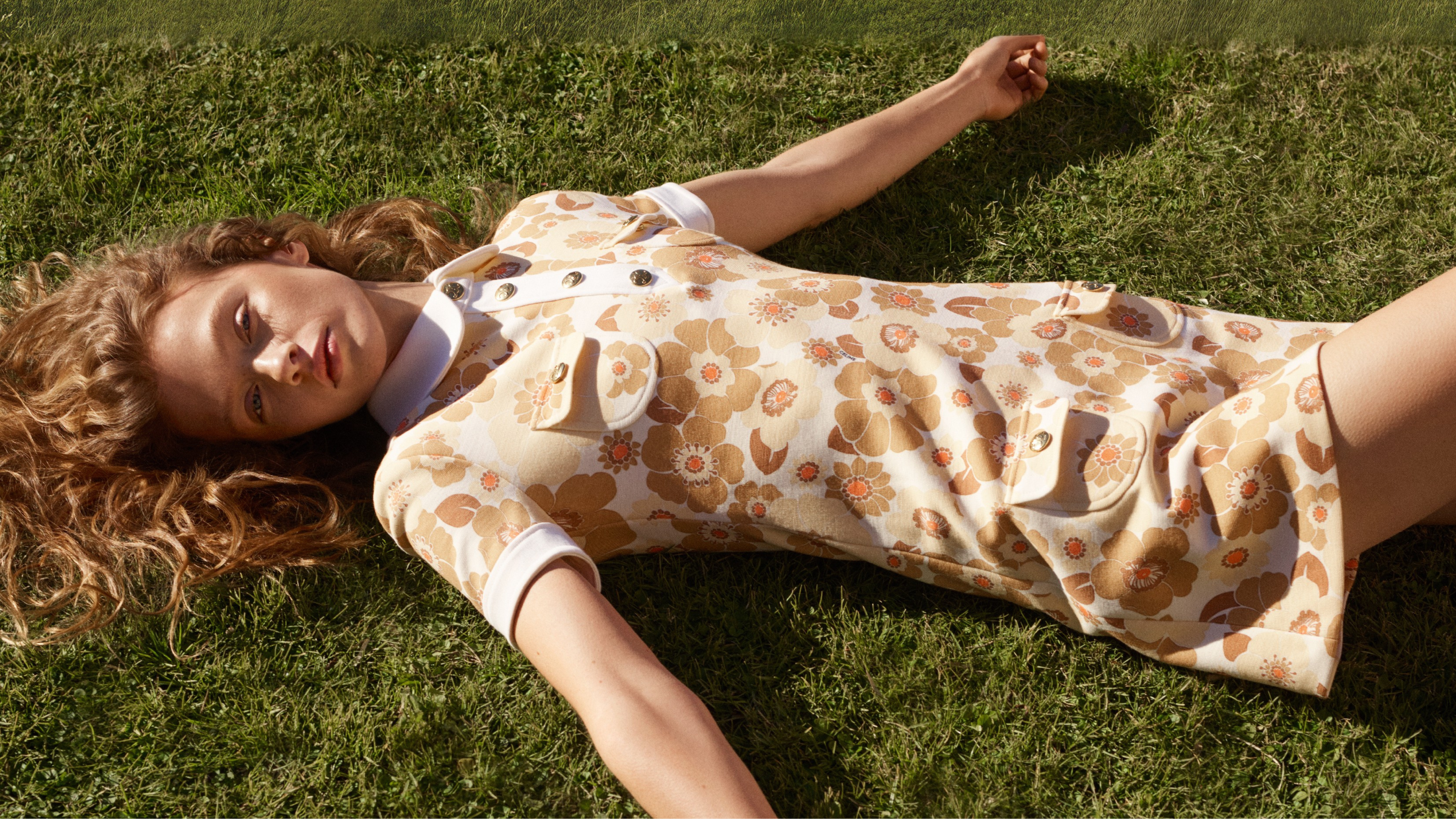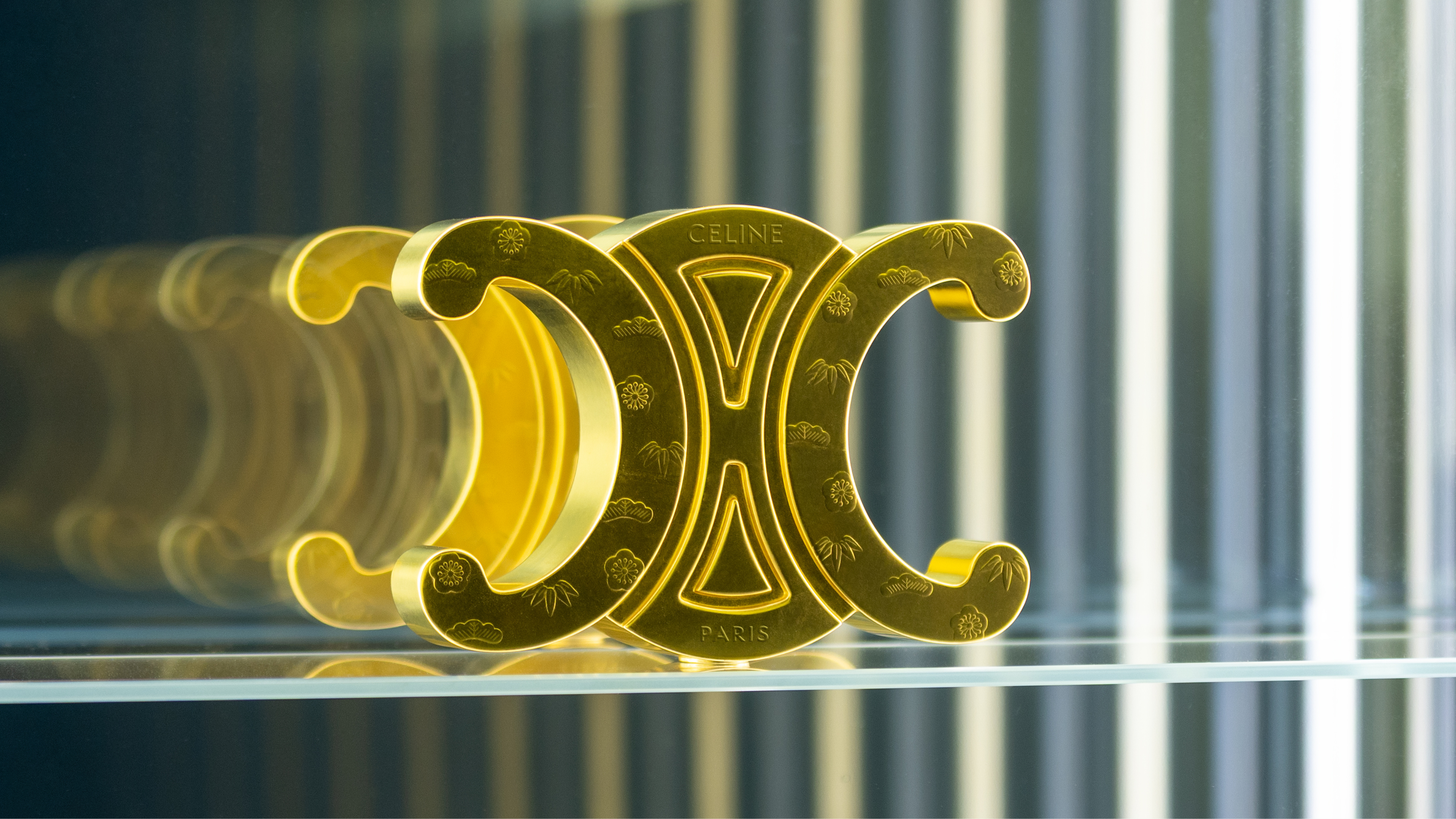Piaget’s dramatically new women’s watch, with its soft but strong trapeze-shaped case pays tribute to the 1960s, to the origins of the Maison’s creative force, and the continuing free-spirited play of shape and form, driven, as always, by innovation, extravagance, audacity and the unrivalled mastery of the House of Gold.
“DO WHAT HAS NEVER BEEN DONE BEFORE”
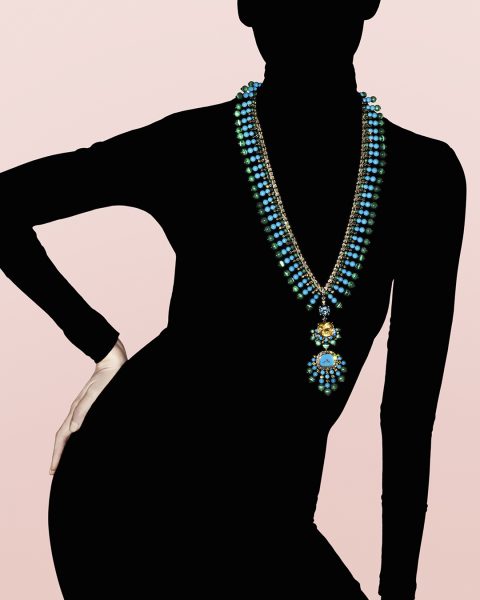
Exuding playful sophistication, the new Sixtie jewellery watch marks the latest move in Piaget’s Play of Shapes: a joyously irreverent game that started in the mid 1960s, toying with traditions, breaking boundaries, playing with shape, form, light and lustre, changing the shape of watchmaking forever. Sixtie, set to be a contemporary classic, with its trapeze-shaped case, silky gadrooned bezel and rocking, rolling bracelet, is named for sixty seconds that turn into a minute, sixty minutes that turn into an hour, and Piaget’s imagination and skill, rooted in the 1960s, in turning the watch into a jewel, and a jewel into a thrilling timepiece that marks its moment in time.
PIAGET – SHAPE-SHIFTING THROUGH TIME
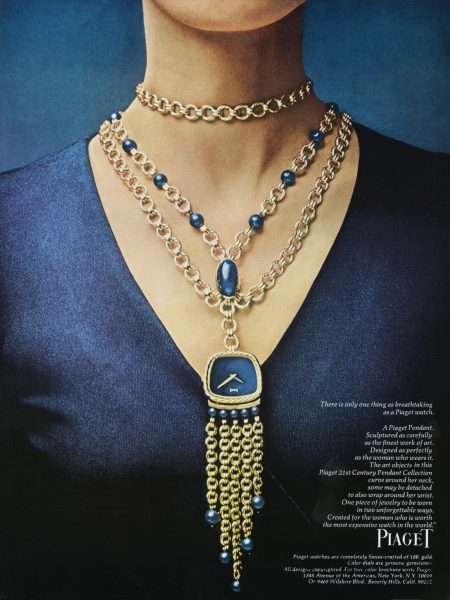
In 1969, at the annual Basel Fair, Piaget unveiled the 21st Century collection, rocking the status quo with a series of strikingly contemporary jewellery watches: avant-garde jewels that happened to tell the time, deep openwork cuffs, long swinging sautoirs, rugged hand-textured gold bracelets, all alive the richness of gold and the vibrant colour of ornamental or gemstone dials. The collection transformed the watch from a functional accessory to a design-driven, fashion-forward work of art, an object of desire. “A watch is first and foremost a piece of jewellery”, as Yves Piaget once said. One of the defining features of the collection was the unexpected variety of shapes of case and dial: taking the place of the usual round dial were ovals, horizontal and vertical or positioned at unexpected angles, rectangles of startling proportions, and most arresting of all, the trapeze-shape, unforgettable and inspirational as the fringed pendant watch on an flamboyant gold chain sautoir. These carefully considered shapes brought high-energy and vivacity, and an element of surprise to each masterpiece, and at the same time they harmonised perfectly with the conceptual design of these audacious creations, so that the case and dial became not only functional structural components but integral design features.
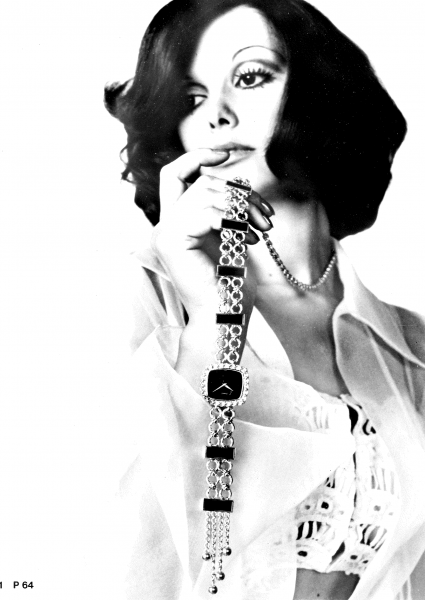
With the 21st Century Collection, Piaget joined the 1960s and 70s cultural revolution, finding new relevance, new informality for the jewellery watch in a fast changing modern world. Just as fashion was searching for a new expression of freedom and femininity in a youth-fuelled society. The trapeze shape, so unexpected, with a rule-breaking exuberance to its free-form interpretation, fast became a Piaget stylistic signature.
In general, 1960s design was dominated by strong, geometric shapes and forms, informed both by ‘youthquake’ playfulness and a powerful futuristic, space-age vision. Colours and shapes showed the influence of Pop art, just as abstract patterns echoed the graphic illusions of Op Art. At the same time, there was an emphasis on comfort, dynamism and freedom of form and expression, while new materials enabled unconventional shapes, especially in furniture, as in the now iconic Egg and Bubble Chairs or Verner Panton’s undulating, ergonomic plastic stacking chair, conceived in 1950 and now a design classic.
1960s fashion, undergoing radical transformation, in London, with Mary Quant and Paris, with Courreges amongst others, also took on new shapes and forms. The ‘A’ line dress, born in the 1950s became shorter and sharper and silhouettes were geometric, often trapeze-shaped.
PIAGET PIONEERS
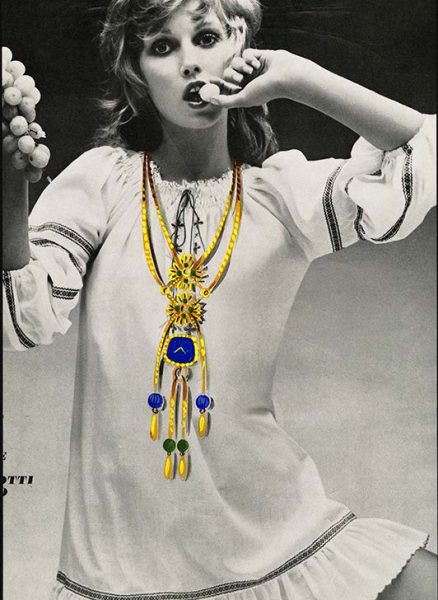
Valentin Piaget, grandson of the founder, creative visionary and inventor of revolutionary watch movements (9P in 1957 or 12P in 1960 to name just a few), grasped the freedom offered by social, cultural, and artistic upheaval, feeding his own audacity and creativity, and Piaget’s enduring free spirit. He worked closely with the seminal watch designer of the era, Jean-Claude Gueit, who saw himself as a ‘stylist’, rather than a designer, and nurtured a new creative working relationship between design and technology, art and craft. In a master stoke of inspiration, Valentin sent the designers of the Maison’s Creative Studio to Paris, to see the catwalk shows and absorb the pulsating creative energy of the world of fashion. They were tasked with dreaming up accessories, watches and jewellery, to complement the new, avant-garde fashions, designs, unlike anything that had gone before, jewellery watches that would capture the excitement of contemporary cultural lifestyle, infused as it was with art and music. Back in Switzerland, the designers sketched and painted, expressing their ideas, often directly onto pages torn from fashion magazines. The result was the 21st Century collection, brought to fruition and launched by Valentin’s nephew, the free-thinking, charismatic Yves Piaget.
THE SHAPE OF THINGS TO COME
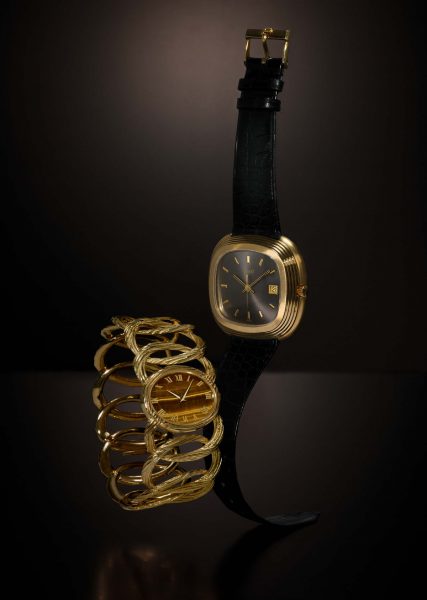
Since then, Piaget has continued to play its provocative play of shapes, always respectful of the great heritage of Swiss watchmaking, yet always ready to take risks, to subvert traditions. Through the 1970s, new and precious jewellery watches could be square, octagonal, hexagonal, while Piaget also dared to blend and re-shape classic geometric forms, infusing them with movement, energy and fluidity: a square mingled with a circle, an oval elongated into an ellipse, a long and slender rectangle, and the signature trapeze, its angles muted, its form alive, soft and fluid. Breaking the rules of geometry, the familiar forms seem to shape-shift before our eyes, stimulating the imagination, challenging perceptions, with the harmony of contrasts and contradictions.
In 1972, the watch originally called “15102”, favoured by Andy Warhol and later named for him, the Andy Warhol watch, took the form of a powerful cushion shape. In 1973, Piaget launched what would become later on the Limelight Gala watch, bringing a new dynamism and fluidity to the conventional circular case, with the lugs breaking free from the circle, streaming onto the bracelet, creating lines of light and life. Much later, in 2024, celebrating Piaget’s 150th anniversary, the Essence of Extraleganza High Jewellery collection delved deep into the Maison’s exploration of shape and form, choreographing thrilling compositions both geometric and lyrical, including a set of breathtaking jewels of emeralds and diamonds in which specially-cut baguette stones were arranged and set to create a woven basketwork effect.
FREE FORM, FREE SPIRIT, FREE EXPRESSION
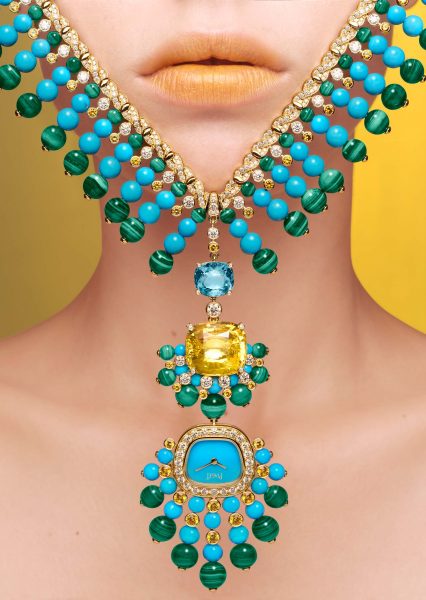
The new Sixtie reinvents the trapeze shape that plays such a vital role in Piaget’s story of artistry and audacity. The geometric form is lusciously softened, recalling the 1969 Swinging Sautoirs of the 21st Century collection, its angles as if melted into strong yet sensual lines, creating a shape that seems to shift between trapeze, square, round or cushion; free-spirited and free-form, liberated from the constraints of convention or expectation, in true Piaget style. The finely chased gadroons of the deep bezel reference the Piaget 14101, the Beta 21 quartz watch, the first timepiece to incorporate the chiselled lines. They recall the Andy Warhol watch, now a design icon, hinting at the Piaget Society, the circle of 1970s jet-set luminaries of Yves Piaget’s inner circle, drawn to the Maison’s wayward modernity. The refined craftsmanship of the gadroons tells of Piaget’s Mastery of gold, the superlative hand-engraving that brings light, life and lustre to the watch. The same mastery of gold, the versatility of skills perfected by Piaget artisans, are showcased in the meticulously articulated bracelet. Composed of trapezoid links, the bracelet slithers around the wrist, supple, playful and pleasurable, with a vintage flavour, redolent of 1940s glamour, or the chunky gold bracelets worn by 1960s stars and socialites. Redolent too of Piaget’s signature integration of case and bracelet, function and beauty, watch and jewel, always in perfect harmony, as in the Piaget Polo 79 and the Aura High Jewellery watch.
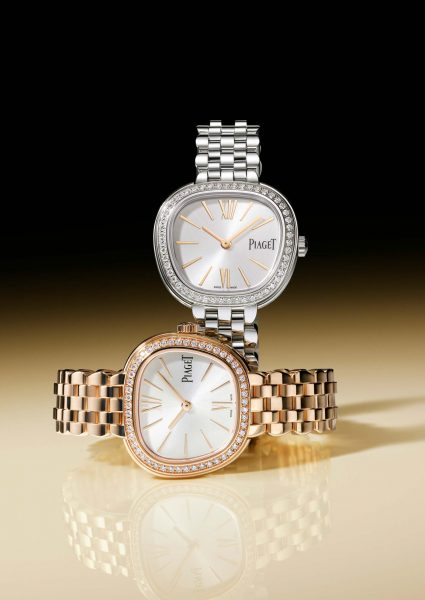
Just as Piaget has always crossed boundaries, melding and mixing ideas, shapes, skills, fusing jewels and watches, precision and sophistication, art and craft, serious dedication and hedonistic pleasure, so Sixtie mingles the geometric and the curvaceous, classic and contemporary, tradition and modernity, masculine and feminine: the perfect expression of today’s blended society, of blended beauty, ideas and values, an expression of modern, multi-faceted, versatile, independent femininity.
Lastly and importantly, Piaget understands that today’s choice is vital for individuality of self-expression, and the Sixtie collection offers various options, starting with an entry level steel model, as well as a mixed-metal, two-tone version in steel and rose gold, along all gold models, with or without diamonds, and a gold Sixtie with ornamental turquoise dial. A celebration of individuality, and of Piaget’s essential and enduring play of shapes.
Piaget Watches and Wonders Geneva Watches and Wonders Geneva 2025

